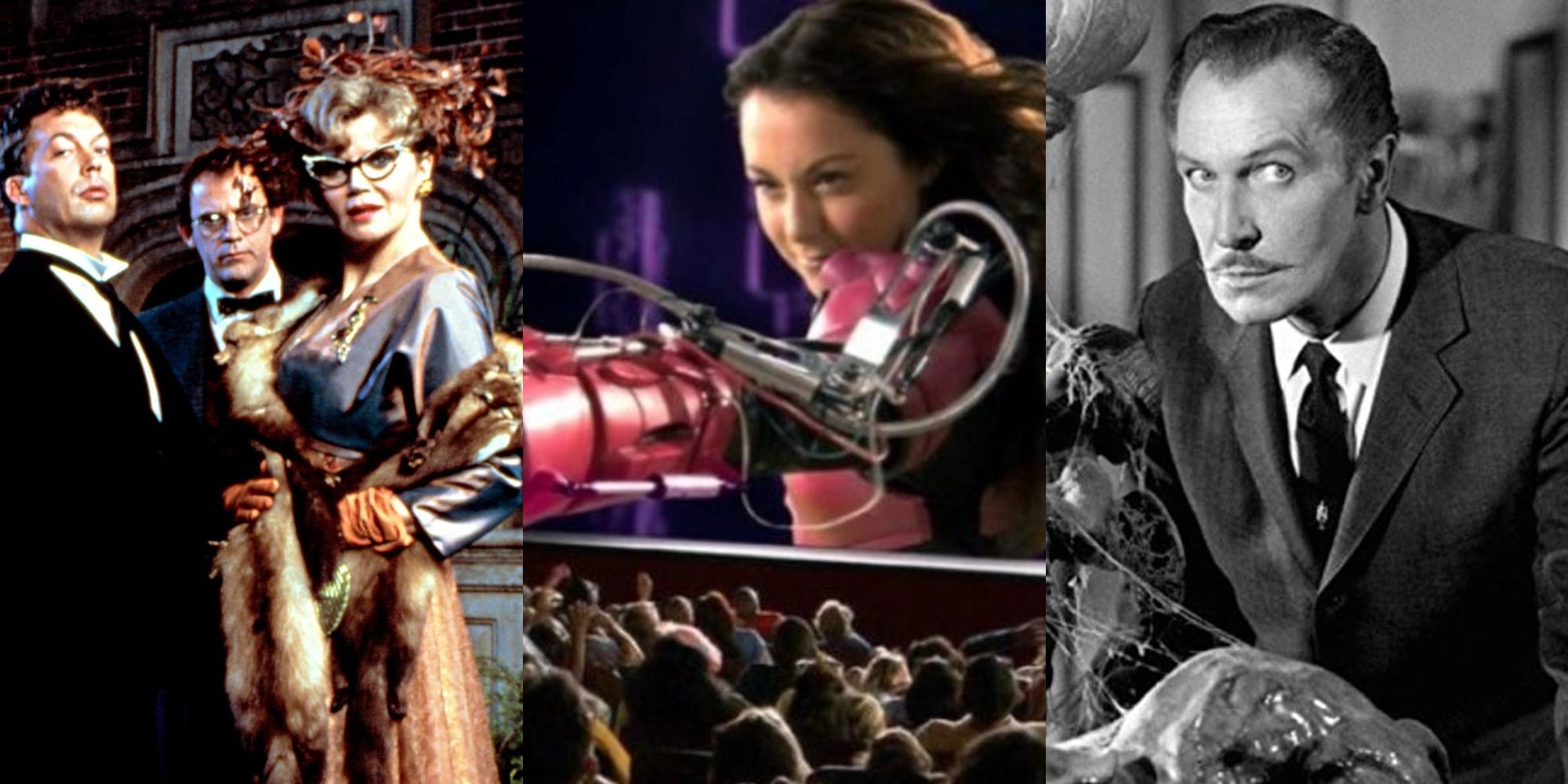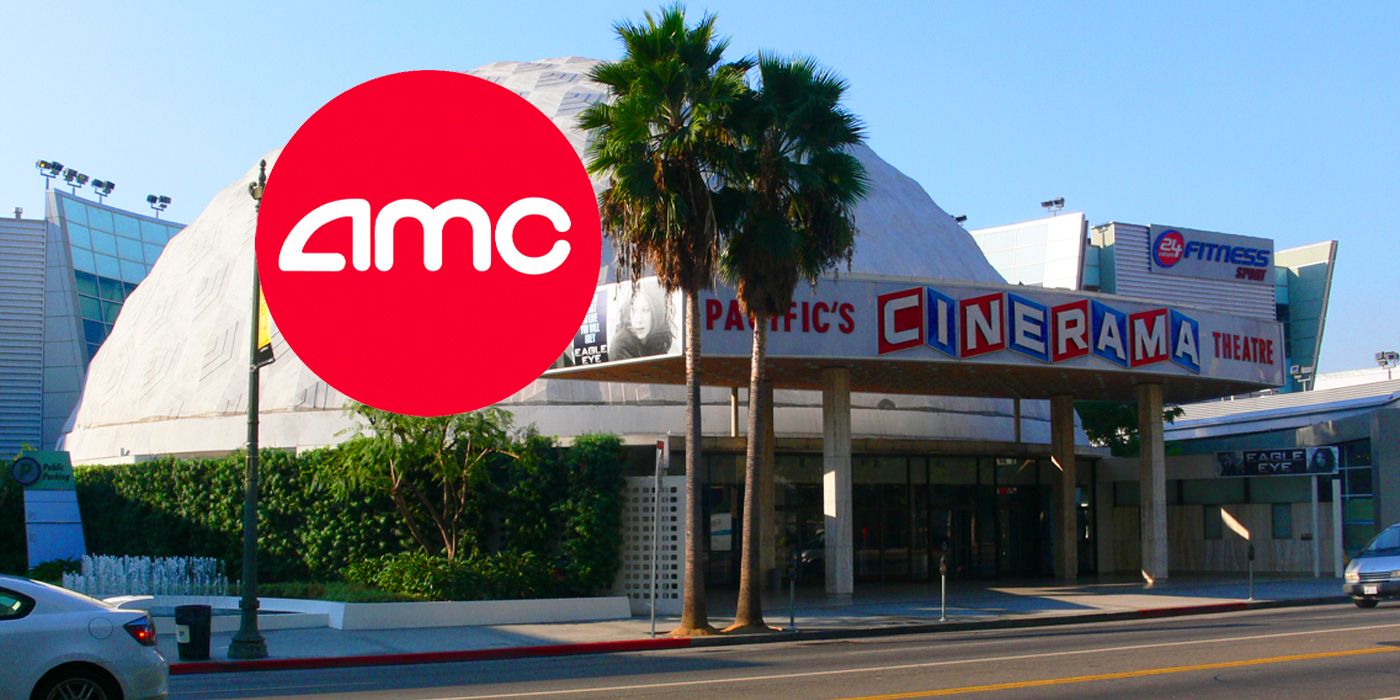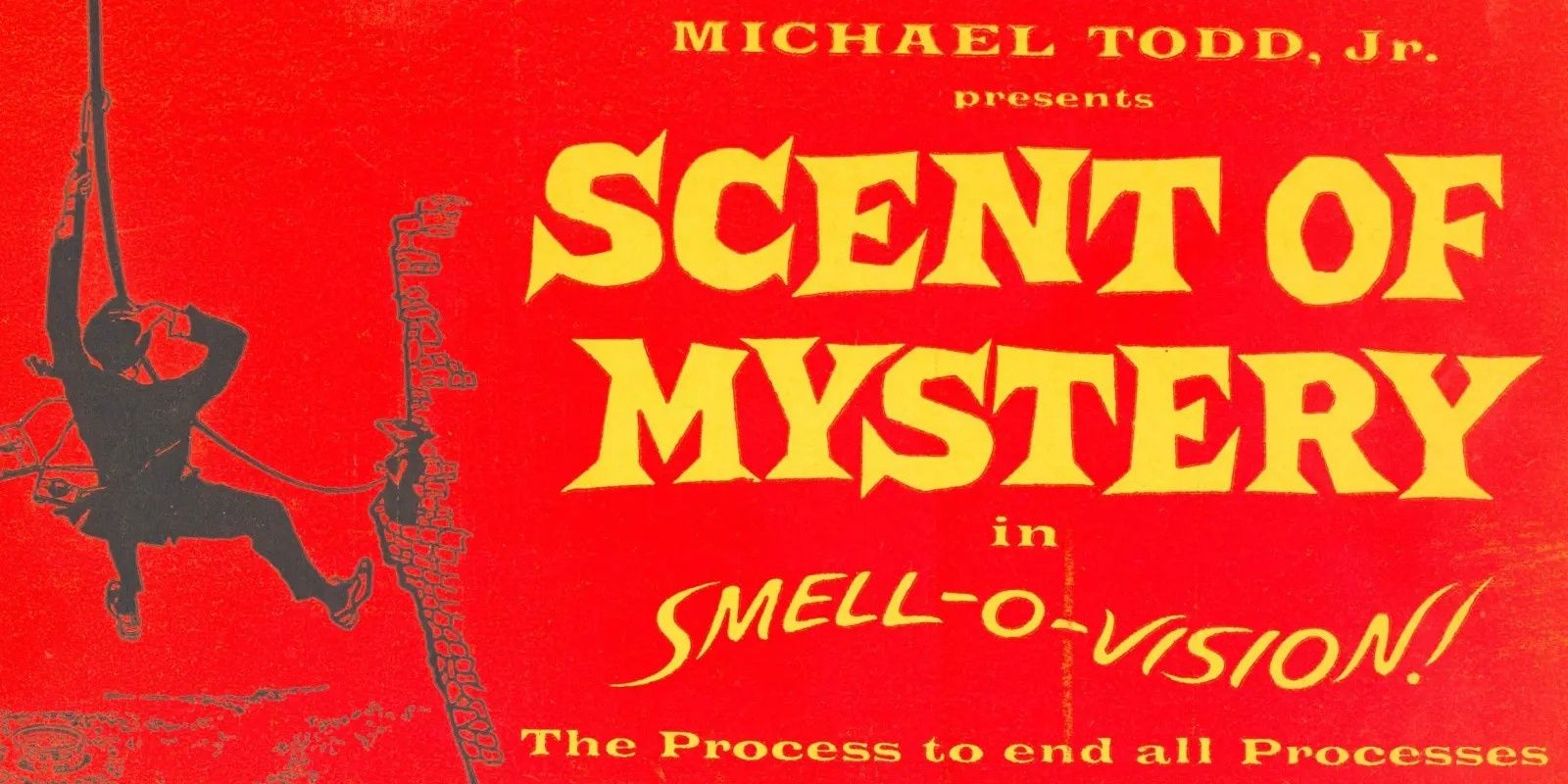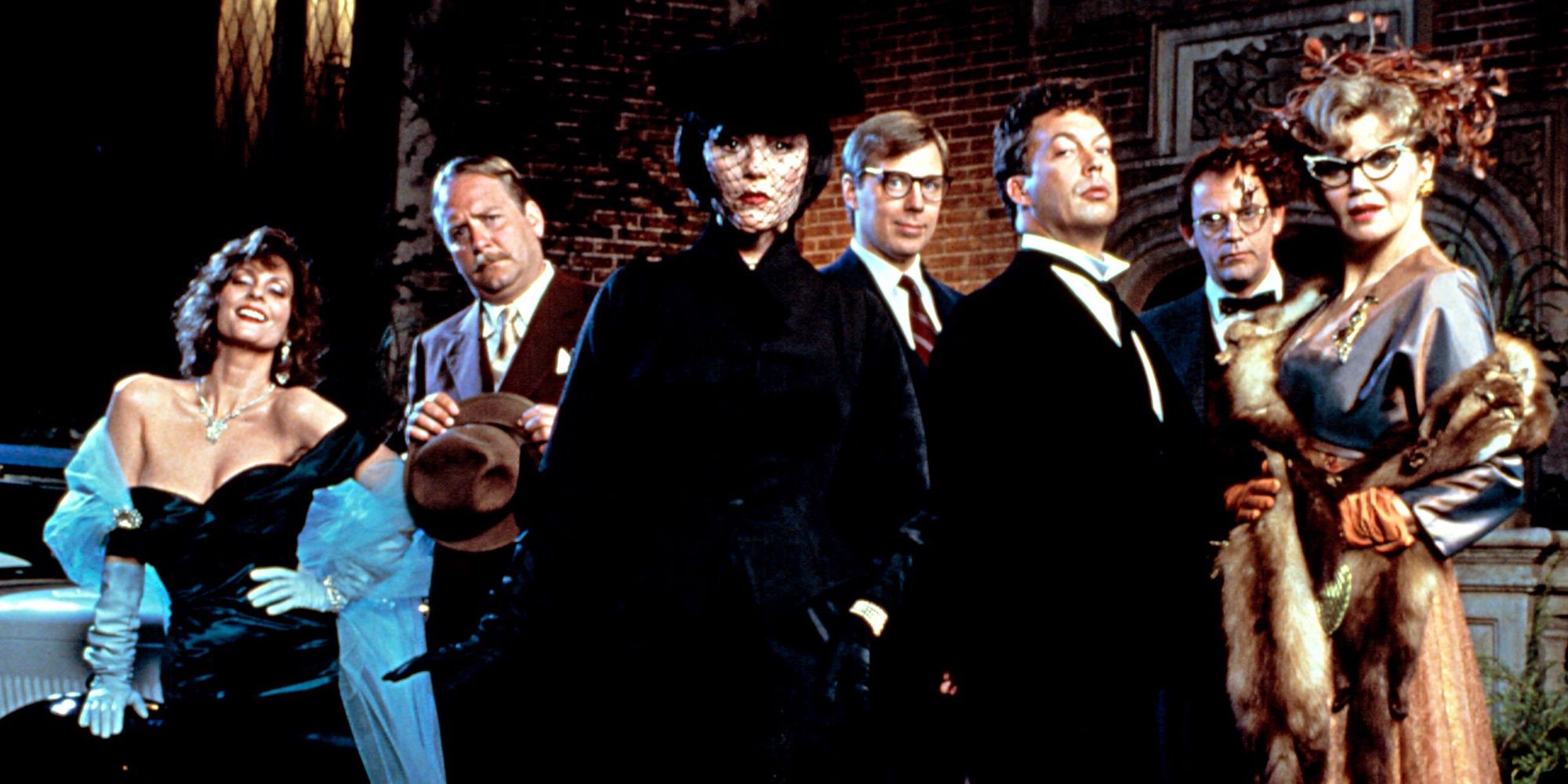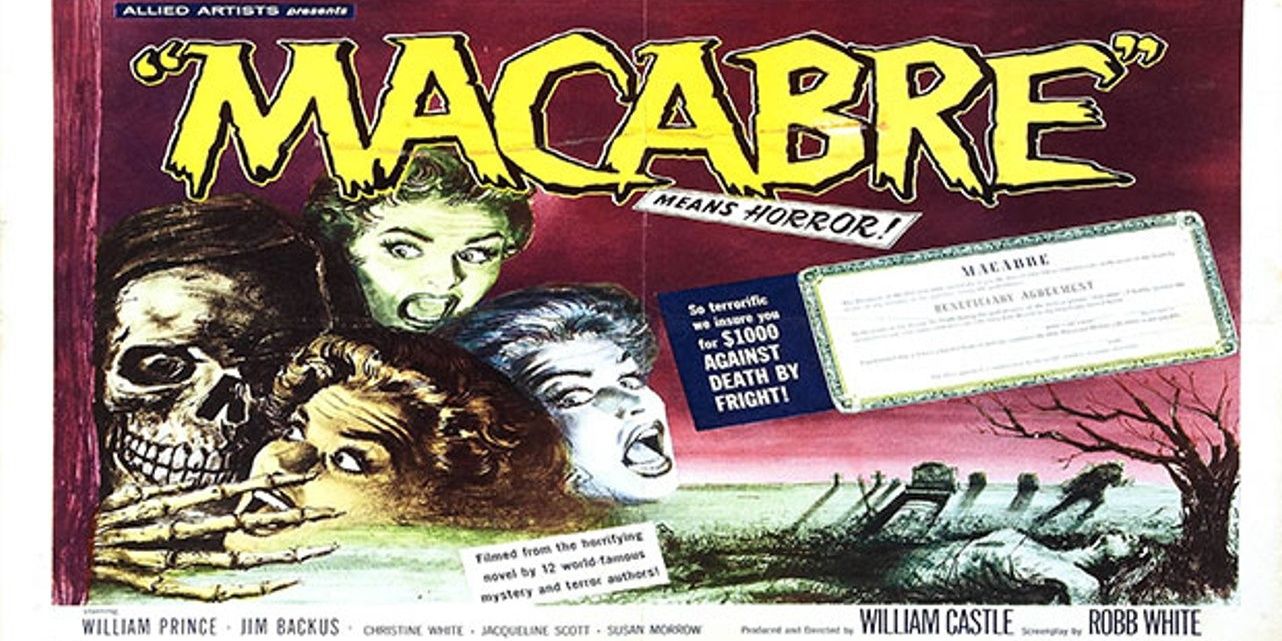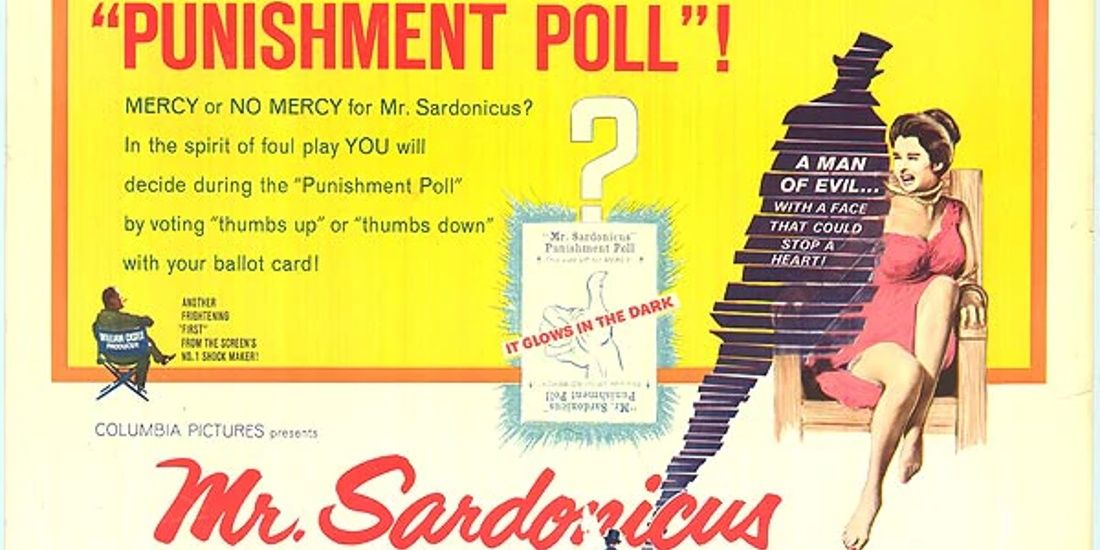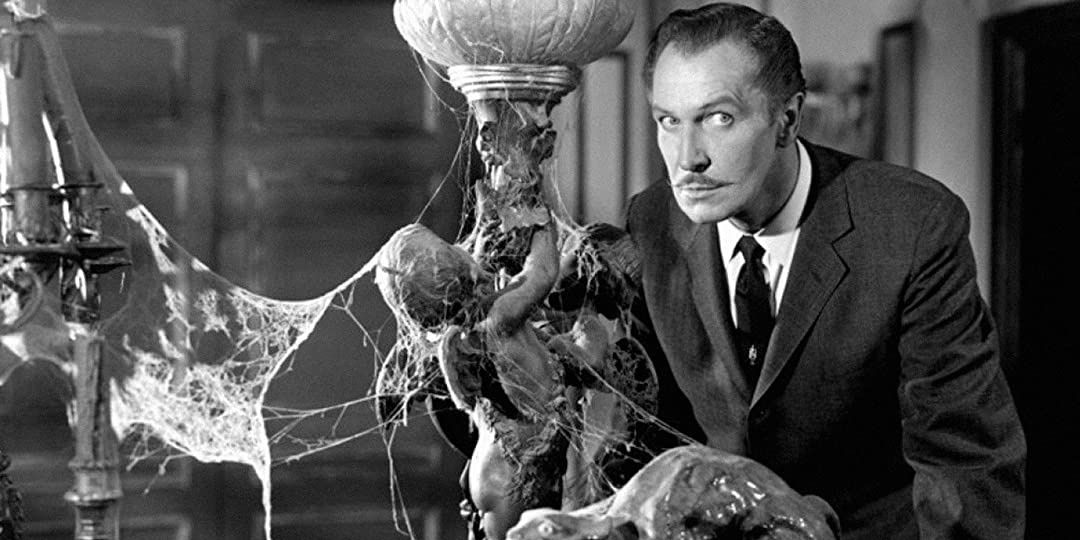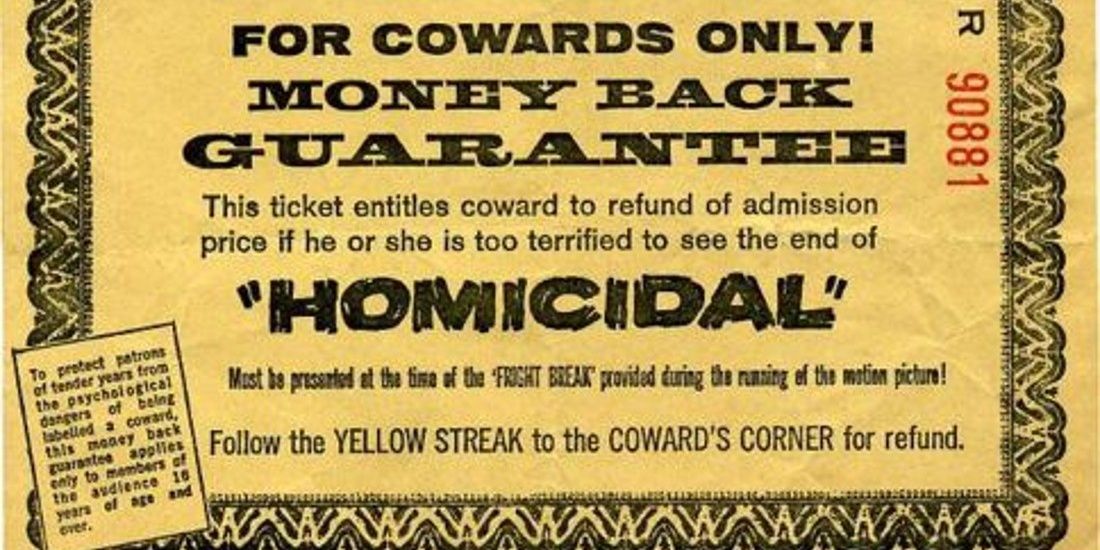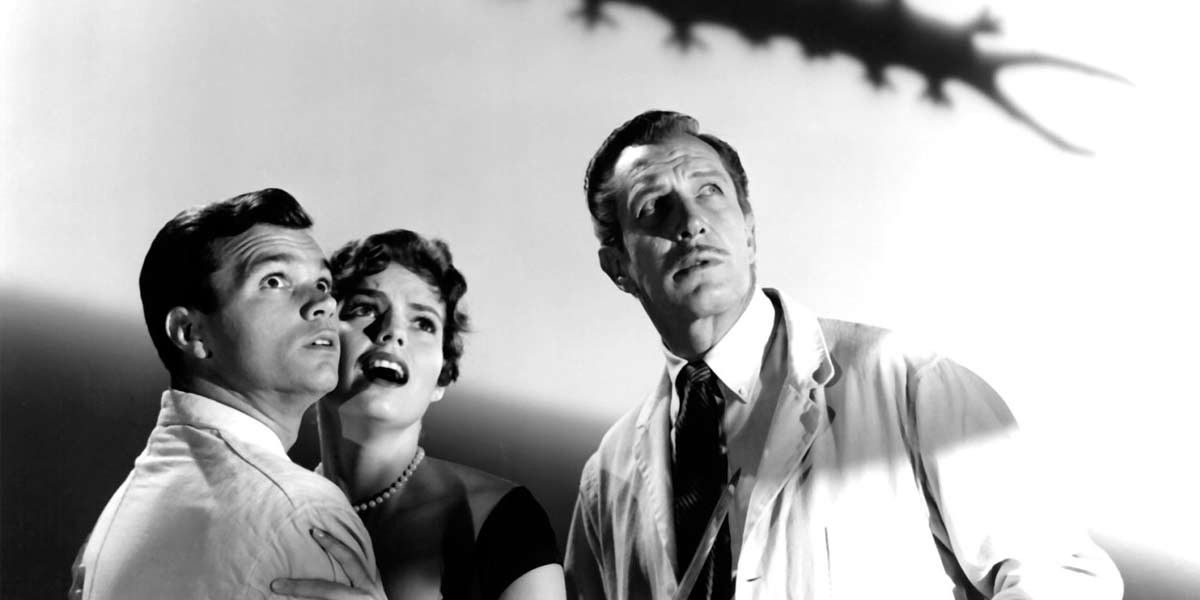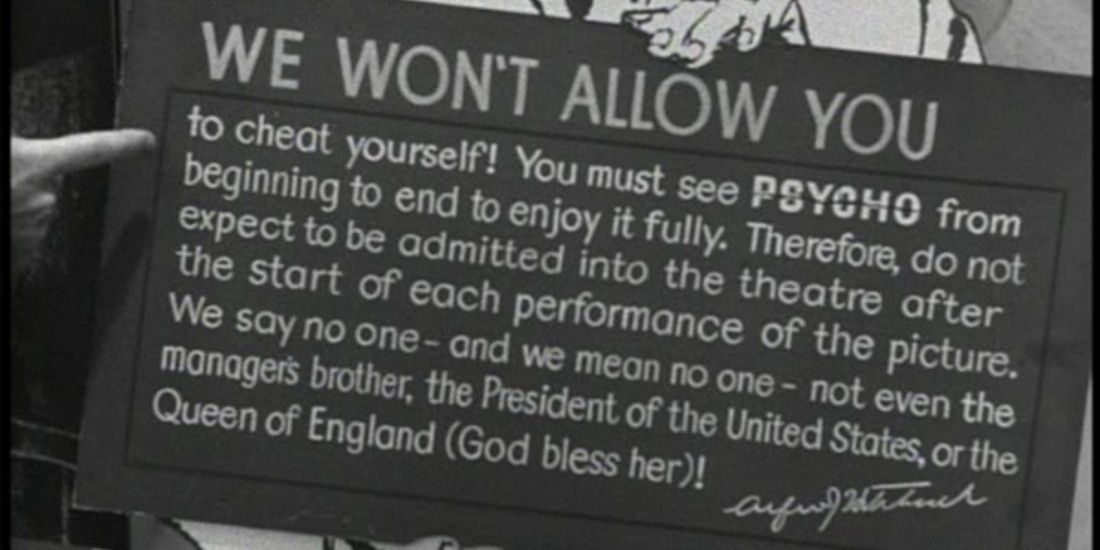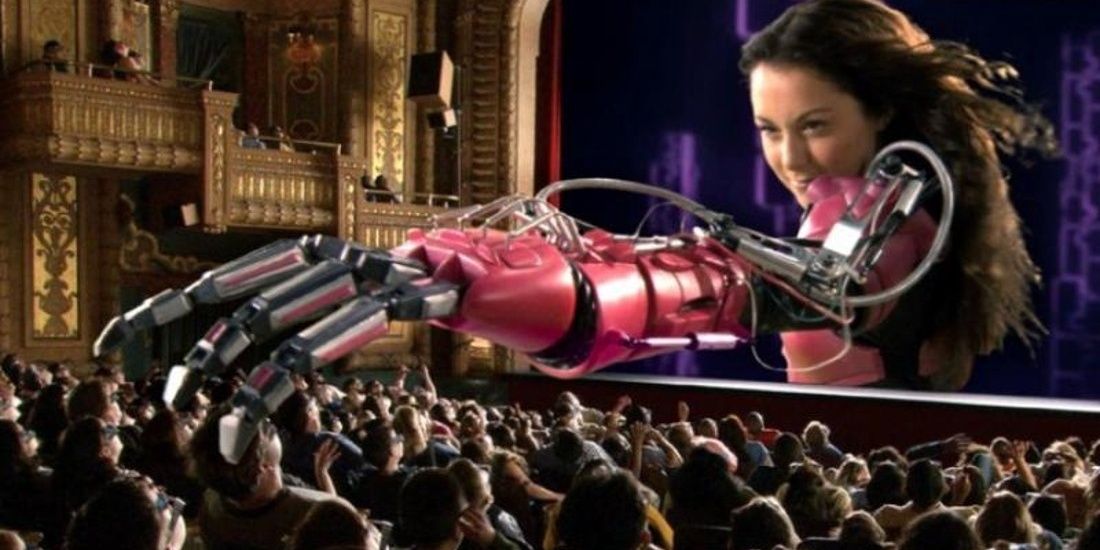With surprise masterpieces like Everything Everywhere All at Once gaining huge audiences just through word of mouth, it's interesting to look back and study all the ways that movies and their creators can bring people to the theater. One such method is to include a gimmick meant to enhance your viewing experience and make your trip to the theater worthwhile.
Whether the movies themselves are good or not is irrelevant. All that matters is whether the gimmick that comes with it is unique and fun, such as the multiple endings of Clue or the fascinating anti-spoiler campaign of Psycho.
Cinerama
The average movie theater screen is between 45 and 65 feet wide, and IMAX theaters reach even greater sizes. Cinerama theaters boasted 97-foot curved screens, on which three projectors would project images larger and more immersive than any other theater was capable of, with excellent sound and shocking realism.
Invented by Fred Waller and first released in 1952, Cinerama had the same goal as many theater gimmicks: to combat the rising popularity of television and draw viewers out of their homes and into movie theaters. Though its popularity waned because of high expenses and glaring flaws (for instance, if one projection failed, the whole showing suffered), it is still an interesting historical spectacle.
Smell-O-Vision
The concept of pumping scents into theaters to better immerse audiences in the film is a very old one. Whatever specific technique is used (Scentovision, AromaRama, or Smell-O-Vision), the general idea is the same. It's often more trouble than it's worth, as the effect is ruined by bad timing and it can take an hour to flush the smells back out of the theater, but that doesn't stop theater owners from trying.
There are many creative ways to attempt it. 1960's Scent of Mystery used certain scents to indicate characters and reveal plot points. John Waters' "Odorama" version of 1982's Polyester utilized scratch-and-sniff cards. New film formats called 4DX purport to be the most cutting-edge development in sensory enhancement for moviegoers and includes smells pumped into the theater.
Three Different Endings - Clue (1985)
In the black comedy masterpiece Clue, the original board game's classic characters must solve a blackmail and murder mystery to find the killer in their midst, playing up the most common mystery tropes in film as they go. The killer's true identity is revealed by the end...or is it?
Clue was released in theaters with three different endings, with the idea being that viewers would realize that their experience of the film didn't match up with others' and keep returning to the theater to find all the endings. This is a rare example of a theater gimmick that translates well to home release: Blu-Ray and DVD copies of the film give viewers the option to have an ending randomly selected.
Death Insurance - Macabre (1958)
Producer William Castle is famous among horror fans for his many creative theater gimmicks. One of his earliest was guaranteeing a payment of $1,000 to the family of anyone who died of fright while seeing Macabre. Viewers signed genuine life insurance policies by Lloyd's of London at the theater door, surrounded by nurses at the ready and hearses parked on the street outside.
According to the trailer, audience members with preexisting conditions would not be allowed to collect on this policy. Castle himself joined in on the fun by arriving at major city premieres of the film in a coffin. This all made Macabre massively profitable, and convinced studios to allow Castle more films and more elaborate gimmicks.
Punishment Poll - Mr. Sardonicus (1961)
In one of William Castle's best B-movie shockers, the titular Mr. Sardonicus, a reclusive baron cursed with a horrific permanent rictus grin (not featured in the trailer to keep its reveal shocking), commits many dastardly deeds. These include abusing his servants, kidnapping young women, and tormenting his wife.
After witnessing this, the audience was asked to choose the ending of the film: should Mr. Sardonicus be saved from his curse, or left to die painfully? Audiences overwhelmingly chose to punish him with death. Castle claims in his autobiography that both endings were filmed and valid options. The footage of the "mercy" ending has never been found, and some historians believe it never really existed, with Castle accurately predicting the audiences' bloodthirsty behavior and not bothering.
Emergo - House On Haunted Hill (1959)
Possibly William Castle's most famous gimmick comes from House on Haunted Hill (not to be mistaken for an adaptation of Shirley Jackson's Haunting of Hill House). At the end of the film, Vincent Price's character puppeteers a skeleton to frighten his treacherous wife into thinking he's back from the dead, frightening her into a pit of acid.
At this moment, a real plastic skeleton would emerge in the theater, swooping down on a pulley system over the audience. As screenwriter Robb White bemoaned, once audiences caught wind of the gimmick, children would bring slingshots to the theater and attempt to shoot the glow-in-the-dark skeleton down.
Fright Break and Coward's Corner - Homicidal (1961)
Homicidal is a forgettable film with wildly entertaining gimmicks. Right before Miriam enters the house of Emily, who she's just realized is a murderer, a 45-second timer starts, with a voiceover warning the audience that if they were too scared to see the ending, this was their only chance to chicken out and get a refund.
When people actually started to leave and get those refunds, Castle added a "Coward's Corner." John Waters, himself a Castle fan, described it in his book Crackpot: anyone who left would be followed by a spotlight up to a booth where a nurse took their blood pressure and made them sign a card declaring themself a "bona fide coward," all while a loud recording laughed at and mocked them. The fear of public shaming overrode desires for money: nobody went for refunds anymore.
Percepto - The Tingler (1959)
The Tingler's gimmick is among William Castle's most ingenious. The film stars Vincent Price as a scientist who discovers the reason humans instinctively scream when frightened: there are creatures living in human spines called Tinglers that feed on fear, growing bigger, and are only shrunk by the sound of screaming.
At the climax, a Tingler escapes into a movie theater. The film stops and the image of a crawling Tingler is projected across the screen, with Price warning the audience, "Scream for your lives! The Tingler is loose in this theater!" Buzzers called Percepto implanted in the seats would vibrate, replicating the sensation of a Tingler in the spine, and paid "screamers and fainters" planted in the audience would be carried out on stretchers, all to elicit the desired screams.
Nobody But Nobody Allowed In Late - Psycho (1960)
Alfred Hitchcock, himself an admirer of Castle's gimmicks, used one of his own to hype up the greatest thriller ever made: Psycho. He bought up all copies of Robert Bloch's 1959 novel to keep anyone from reading the story ahead of time, and instituted a rule that no theater could allow patrons into showings of Psycho once the movie started.
At a time when it was typical for fans to casually stroll in late to movies and discuss spoilers freely, this was startling and effective. Theaters held fast to the rule. Viewers lined up out the door to see all of Psycho. This served another practical purpose: making sure that latecomers wouldn't wonder where the star Janet Leigh was, as her character is famously killed just 20 minutes into the film.
3D Movies - Various
3-D is the oldest and most popular theater gimmick. The very first 3-D movie is believed to be the now-lost 1922 film The Power of Love, which used red and green film strips overlaid and viewed through anaglyph glasses. It was also the first movie with an alternate ending: audiences chose whether they wanted a happy or tragic ending.
The first color 3-D film was 1953's House of Wax, starring Vincent Price and featuring a character bouncing a paddleball at the screen and speaking to the audience. In the 1980s, 3-D was a popular if low-quality fad, added to movies like Jaws 3-D and Friday the 13th Part III in 3-D. It has experienced a resurgence in the 2000s with films like Avatar. Time will tell how 3-D will evolve in the future.

